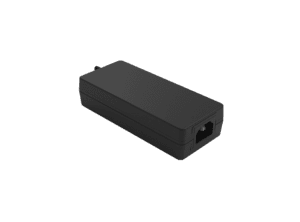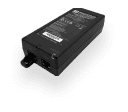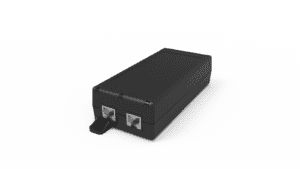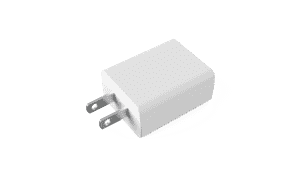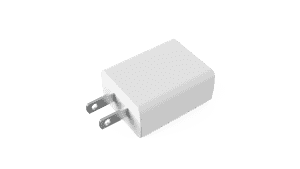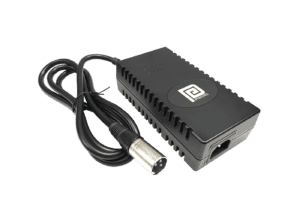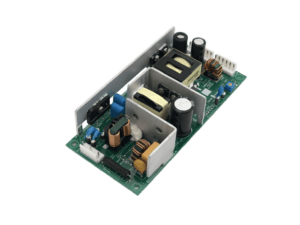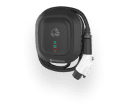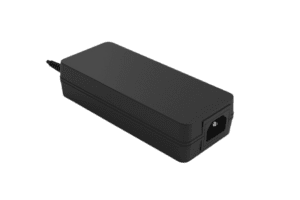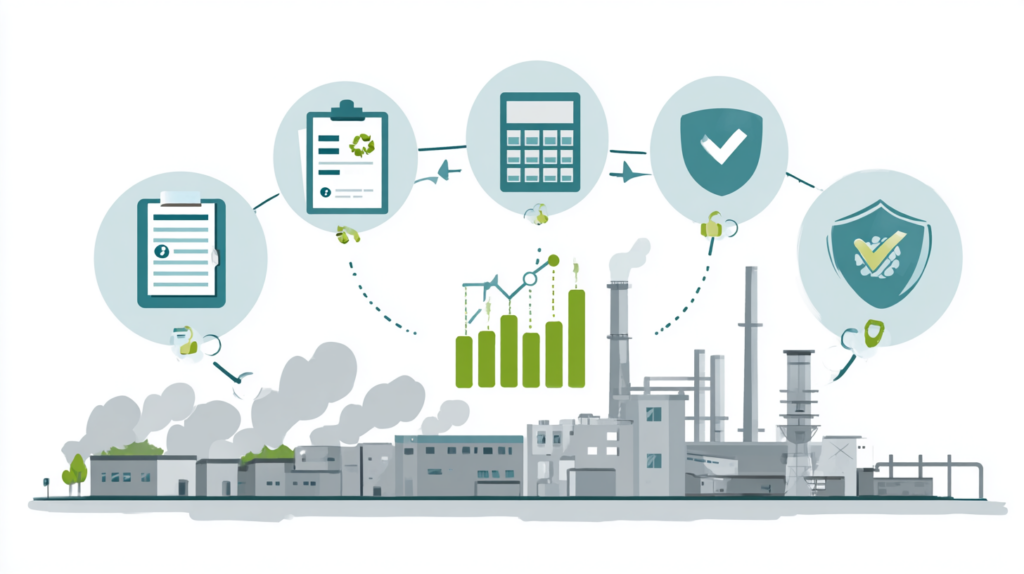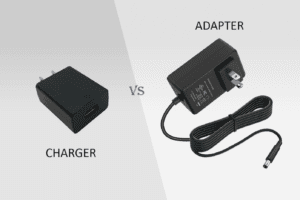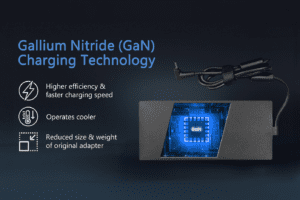BLOG
ISO 14064 Compliance Guide: How to Verify Carbon Reporting in Power-Electronics Production Lines
QUICK LINKS

Why ISO 14064 Is Critical for Carbon Reporting in Power Supply Manufacturing
As environmental regulations evolve and climate disclosure becomes standard practice, manufacturers of power electronics are increasingly required to verify their greenhouse gas (GHG) reporting. ISO 14064 provides a globally recognized framework for quantifying, managing, and validating GHG emissions from both direct operations and value chains. For OEMs in the power electronics sector, this standard helps ensure your emissions reporting is not only accurate—but auditable and aligned with investor, regulatory, and customer expectations.
ISO 14064 is structured in three parts:
- Part 1: Specification for organizational-level quantification and reporting
- Part 2: Specification for project-level GHG reductions or removals
- Part 3: Guidance for validation and verification
For power supply production lines, ISO 14064 compliance ensures your carbon accounting includes Scope 1, Scope 2, and relevant Scope 3 emissions, including fabrication, assembly, and logistics. It’s especially important for suppliers in global OEM supply chains seeking contracts from enterprise customers with Science-Based Targets (SBTi) or CSRD obligations.
Top Features
- Aligns with the GHG Protocol and ESG regulatory frameworks
- Supports third-party validation of emissions inventories
Applicable to organizations, projects, and manufacturing sites
Top Benefits
- Builds trust with enterprise clients and investors
- Simplifies environmental compliance audits and ESG disclosures
- Establishes a consistent carbon baseline for reduction planning
Best Practices
- Use certified carbon consultants or validation bodies
- Ensure internal reporting systems are aligned with ISO 14064-1 structure
- Maintain audit trails for activity data, emission factors, and calculations
ISO 14064 isn’t just about compliance—it’s about credibility in a carbon-conscious market.
Mapping Emission Sources in Power-Electronics Production Lines
A successful ISO 14064 implementation begins with identifying and mapping emission sources across your production environment. For power supply manufacturers, these sources include:
- Scope 1: On-site fuel use (e.g., gas furnaces, soldering operations)
- Scope 2: Purchased electricity for SMT lines, assembly lines, and HVAC
- Scope 3 (partial): Inbound materials, packaging, logistics, end-use
Within a production line, emissions can be tied to equipment-level consumption, such as:
- Reflow ovens and wave solder machines
- Injection molding for enclosures
- Automated testing and burn-in equipment
ISO 14064 requires a structured approach to categorize these emissions and calculate totals using activity data and standardized emission factors (often from IPCC or EPA databases). Your goal is to create a transparent, repeatable carbon inventory that can be validated by a third party.
Top Features
- Breaks emissions into process-specific activity types
- Enables equipment-level monitoring and reduction targets
- Supports integration with factory energy dashboards
Top Benefits
- Identifies high-emission machines or inefficiencies
- Enables cost-saving opportunities tied to energy consumption
- Prepares you for supplier audits or customer inquiries
Best Practices
- Create energy-use baselines for each major production cell
- Use sub-metering or power loggers to monitor machine-level usage
- Align data collection timelines with audit schedules and reporting cycles
Understanding your emission sources is the first step toward managing and eventually reducing them—effectively and compliantly.
Collecting and Validating Data for ISO 14064 Reporting
Data accuracy is the foundation of ISO 14064 compliance. Manufacturers must quantify GHG emissions using defensible, documented data sources. This includes everything from utility bills to machine runtime logs to transport invoices. All data must be converted into CO₂-equivalent (CO₂e) emissions using standardized emission factors, and clearly labeled by source, scope, and time period.
To pass ISO 14064 validation:
- Maintain full traceability for each data point
- Ensure consistency between reporting periods
- Document methodologies, assumptions, and conversion logic
Software tools can automate some of this, but manual oversight is still required—especially for scope mapping and emission factor selection. If using third-party data (e.g., supplier emissions reports), OEMs must validate the accuracy or supplement with lifecycle analysis (LCA) tools.
Top Features
- Uses GWP factors from IPCC (AR6) or equivalent databases
- Integrates with ERP, MES, or utility tracking systems
- Enables flagging of outlier values or data gaps
Top Benefits
- Ensures emissions reports are audit-ready
- Simplifies re-certification in future years
- Minimizes risk of greenwashing or reporting errors
Best Practices
- Centralize emissions data in a digital, version-controlled system
- Train operations and procurement staff on carbon data collection
- Validate all emission factors and maintain source citations
Accurate carbon data isn’t just good compliance—it’s smart business. It helps identify savings, track impact, and support sustainable innovation in production.
CLIENT'S QUOTE
"Phihong’s PoE solutions have made a huge difference for us! Our network runs more efficiently, and we’ve seen real cost savings. We couldn’t be happier!"
How to Work with Verifiers and Third-Party Auditors for ISO 14064
Achieving ISO 14064 compliance isn’t just about collecting and calculating emissions—it also requires independent verification by a qualified third party. The ISO 14064-3 standard outlines how external verifiers should evaluate your reporting, methodology, and internal systems.
For power electronics manufacturers, this means preparing your data, documentation, and facility access for a formal audit. Auditors may request:
- Activity data logs and energy bills
- Equipment maintenance and runtime records
- Emission factor sources and conversion tools
- Organizational boundary definitions and exclusions
The verification process typically includes both a desktop review and an on-site visit, during which auditors assess your emissions tracking systems, reporting tools, and facility processes.
Choosing the right verifier is crucial. Look for firms accredited by ISO 14065 or local environmental authorities, with experience in electronics or heavy manufacturing.
Top Features
- Uses ISO 14064-3 verification procedures
- Requires full access to GHG inventory and methodologies
- Often includes sampling, interviews, and evidence review
Top Benefits
- Confirms data accuracy for ESG disclosures or compliance
- Enhances investor and stakeholder confidence
- Avoids future reporting disputes or public scrutiny
Best Practices
- Perform an internal pre-audit to identify gaps
- Document all methodology changes and justifications
- Provide verifiers with secure access to version-controlled files
External verification may seem like a hurdle, but it’s a valuable stamp of trust—especially in sustainability-driven supplier evaluations.
Aligning ISO 14064 Reporting with ESG and Regulatory Requirements
Once verified, your ISO 14064 carbon inventory can serve as the foundation for broader ESG disclosures and regulatory compliance. The standard aligns closely with many existing and emerging frameworks, including:
- CDP (Carbon Disclosure Project)
- SBTi (Science-Based Targets initiative)
- EU CSRD (Corporate Sustainability Reporting Directive)
- SEC climate disclosure rules (USA)
- TCFD and ISSB frameworks
OEMs that manufacture power supplies for enterprise or government clients are often asked to disclose carbon metrics in vendor scorecards or annual reporting cycles. Verified ISO 14064 reports provide the credibility and structure needed to meet these requests.
Additionally, internal sustainability teams can use the emissions data to inform product lifecycle management, packaging changes, and facility-level energy optimization.
Top Features
- Fully compatible with GHG Protocol and ESG reporting standards
- Supports supply chain transparency and customer alignment
- Forms the basis for Scope 1, 2, and 3 decarbonization planning
Top Benefits
- Meets growing client demand for carbon accountability
- Prepares for mandatory disclosure rules in multiple jurisdictions
- Enables long-term sustainability tracking and public reporting
Best Practices
- Map ISO 14064 categories to ESG reporting metrics
- Reuse inventory data in supplier questionnaires and certifications
- Develop a communication strategy for investors and customers
The right compliance structure unlocks more than audits—it builds a trusted sustainability brand for your product line.
How Phihong USA Supports ISO 14064-Aligned Sustainability in Power Electronics
Phihong USA is committed to helping OEMs and partners meet their carbon reduction and ESG goals through ISO-aligned design, manufacturing, and supply chain transparency. As a global provider of AC-DC power supplies, PoE solutions, EV charging systems, and industrial power platforms, we’re implementing verified processes to reduce emissions across our product lifecycle.
We offer:
- Component- and system-level emissions data upon request
- Support for ISO 14064-compliant project reporting
- LCA-based product design support for OEMs with Scope 3 goals
- ISO 14001-certified production sites and verified energy management
- Engineering collaboration to reduce material waste and increase efficiency
Whether you’re starting your ISO 14064 journey or looking to streamline validation across your vendors, Phihong brings deep expertise, audit-ready documentation, and scalable power technology to support your sustainability goals.
Contact us at www.phihong.com or email usasales@phihongusa.com to explore carbon-conscious power solutions for your production line.

Contact Our Team Today!
Our dedicated sales team and international partners are prepared to support you with your latest projects and initiatives globally.
Explore More with Phihong USA
As we conclude our exploration of PoE technology, it’s evident how these innovations are streamlining power and data integration across various industries. Phihong USA stands at the forefront of this technological advancement, offering a diverse range of power solutions designed to meet the evolving needs of modern industries.
Phihong USA’s extensive product lineup includes:
- Power over Ethernet (PoE) Solutions: Delivering reliable power and data transmission over a single cable, ideal for simplifying network installations and reducing costs.
- AC/DC Adapters and Power Supplies: From compact adapters to industrial-grade power supplies, Phihong provides solutions that ensure efficiency and reliability in various applications.
- Battery Chargers: Customizable chargers for lithium-ion and lead-acid batteries, supporting a wide range of power requirements for mobility and industrial applications.
- Medical Power Supplies: Specialized power solutions designed to meet the stringent requirements of the healthcare industry, ensuring safety and reliability.
Phihong USA is committed to innovation and excellence, continually developing products that meet the highest standards of performance and reliability. Their global reach and dedication to customer support make them a trusted partner in powering the future.
Here are some useful links to explore Phihong USA’s offerings further and bring in new potential clients:
Visit Phihong USA to discover how their advanced power solutions can support your business needs. Whether you’re looking to upgrade your network, or find reliable power supplies, Phihong USA has you covered.
By choosing Phihong USA, you’re partnering with a leader in power technology, ensuring your operations run smoothly and efficiently with top-tier power solutions. Contact Us today!
FAQ
What is ISO 14064 and how does it apply to electronics manufacturers?
ISO 14064 is a set of international standards for greenhouse gas accounting and verification. It consists of three parts:
- Part 1: Organizational-level GHG reporting
- Part 2: GHG project quantification and monitoring
- Part 3: Verification and validation guidance
For electronics manufacturers, ISO 14064-1 is the most relevant. It defines how to quantify emissions across Scope 1 (direct), Scope 2 (indirect energy), and Scope 3 (value chain). This standard allows companies to establish a transparent and verifiable carbon footprint, which can then be audited by third-party firms.
Compliance with ISO 14064 helps manufacturers meet customer requirements, investor expectations, and regulatory mandates while building trust in reported environmental data.
How do I begin preparing for ISO 14064 compliance in my factory?
Start by conducting a full emissions inventory. Identify all sources of Scope 1 and Scope 2 emissions, such as natural gas usage, electricity consumption, and facility HVAC systems. Next, gather energy bills, process logs, and material usage data. Determine appropriate emission factors and begin calculating CO₂ equivalents.
Then:
- Define your reporting boundary (corporate, site-specific, or operational)
- Develop internal documentation for data sources and calculations
- Align with ISO 14064-1 structure and categories
- Contact a third-party verification body for audit readiness
Engage your environmental or ESG team to manage timelines and tools like LCA software, spreadsheets, or carbon accounting platforms.
What are the benefits of ISO 14064 verification?
Verified ISO 14064 reporting gives your company a competitive edge. Benefits include:
- Trust: Builds credibility with stakeholders, clients, and regulators
- Compliance: Satisfies supplier carbon disclosure requests and ESG scorecards
- Strategy: Informs decarbonization efforts and lifecycle improvement initiatives
- Readiness: Prepares for future carbon tax or climate-related disclosures
In markets with increasing pressure on suppliers to reduce emissions, ISO 14064 is often a prerequisite to winning contracts or maintaining preferred supplier status.
Can ISO 14064 be integrated with other ESG frameworks?
Yes—ISO 14064 is designed to align with the GHG Protocol and supports reporting under:
- CDP (Carbon Disclosure Project)
- SBTi (Science-Based Targets initiative)
- EU CSRD (for companies with EU clients or operations)
- SEC (U.S. Securities and Exchange Commission) climate proposals
By establishing your carbon data according to ISO 14064, you create a strong foundation that can be adapted for multiple ESG questionnaires, customer scorecards, or regulatory disclosures.
How can Phihong USA help with ISO-aligned carbon reporting?
Phihong USA supports OEMs and partners by offering:
- Carbon data at the product level for Scope 3 calculations
- Low-emission power supply design consultation
- ISO 14001-certified manufacturing and documentation
- Bill of materials (BOM) optimization for sustainability goals
- Partnerships with clients pursuing ISO 14064 verification
Whether you’re conducting a first-time audit or expanding enterprise-wide compliance, Phihong can contribute to your verified carbon reporting success.

